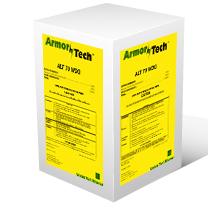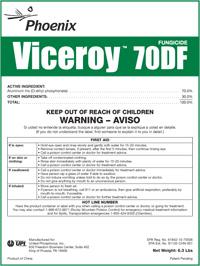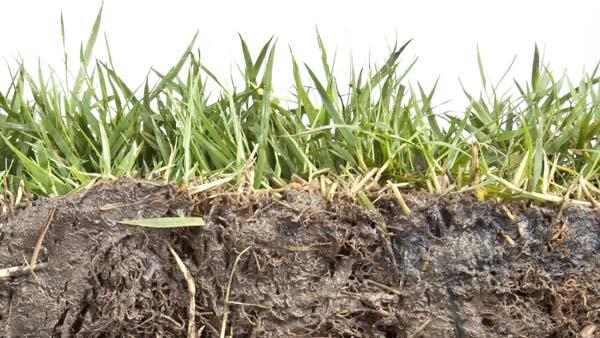 Batches of fungicide marketed under the names ALT 70 and Viceroy 70DF have been voluntarily recalled by NovaSource, a business unit of Tessenderlo Kerley, after a string of recent incidences of damaged turf on golf courses were traced to quantities of the products tainted with the herbicide sulfometuron methyl, the company says.
Batches of fungicide marketed under the names ALT 70 and Viceroy 70DF have been voluntarily recalled by NovaSource, a business unit of Tessenderlo Kerley, after a string of recent incidences of damaged turf on golf courses were traced to quantities of the products tainted with the herbicide sulfometuron methyl, the company says.
According to TKI, laboratory testing indicates the issue is confined to ALT 70 and Viceroy 70DF produced in 2013 bearing batch codes that begin with the number 6 (e.g., 6101701).
 ALT 70 is marketed and distributed by United Turf Alliance and Viceroy 70DF is marketed and distributed by United Phosphorus Inc. Both are post-patent systemic fungicides manufactured by NovaSource TKI. Each contains the active ingredient O-ethyl phosphonate (aluminum tris) is labeled for control of anthracnose, Pythium and Phytophthora.
ALT 70 is marketed and distributed by United Turf Alliance and Viceroy 70DF is marketed and distributed by United Phosphorus Inc. Both are post-patent systemic fungicides manufactured by NovaSource TKI. Each contains the active ingredient O-ethyl phosphonate (aluminum tris) is labeled for control of anthracnose, Pythium and Phytophthora.NovaSource is offering product users the opportunity to return ALT 70 and Viceroy 70DF with batch numbers starting with the number 6 for full credit, including reimbursement of costs associated with the return. Product can be returned to the point of sale or to distributors.
Sales of both products were stopped June 5 after reports of damaged turf began to pop up on multiple golf courses. Damaged turf thought to be connected with use of ALT 70 and Viceroy 70DF has been reported on at least eight golf courses in seven states.
According to the Web site alt70info.com, an investigation is under way and additional information including turf management options for mitigating potential turf injury and other information will be shared on that site.
According to information on that site: "No one has concluded that ALT 70 alone affected the turfgrass in question. However, it is confirmed that the product was used at the golf courses in question in spray tank mixes."
All other Armor Tech products come from other sources unrelated to NovaSource TKI, and are safe to use.
According to alt70info.com, general observations at the affected golf courses include:
- Golf course superintendents reported cool-season turfgrass stopped normal spring green up and stopped responding to normal treatments after fungicide and growth regulator programs were initiated. ALT 70 was one of the products in the program.
- Slowing of turfgrass growth was noted in both bentgrass and bent/Poa mixed stands on greens, collars and approaches. Symptoms generally were noticeable 7-14 days after application.
-
 Older varieties of bentgrass (particularly older German bentgrass) and 8-10-plus year-old Penncross varieties seem to be more susceptible to decreased turf quality and turf loss, whereas newer varieties of bent seems to decline temporarily, but recover more quickly. In mixed stands of bent/Poa, the Poa also recovered and survived much better than bent varieties in the same stand. On one course, areas of ryegrass collars were also affected.
Older varieties of bentgrass (particularly older German bentgrass) and 8-10-plus year-old Penncross varieties seem to be more susceptible to decreased turf quality and turf loss, whereas newer varieties of bent seems to decline temporarily, but recover more quickly. In mixed stands of bent/Poa, the Poa also recovered and survived much better than bent varieties in the same stand. On one course, areas of ryegrass collars were also affected. - Turf loss also seemed to occur rapidly on at least one golf course when turf showing signs of stress (purple bentgrass leaves) received a soil drench application of a of Pythium fungicide tank mixed with a biological nematicide.
- It was generally noted that turf growth was reduced for several weeks after applications of fungicide tankmixes that contained ALT 70 with previous or subsequent applications of growth regulators. Once turf declined, some turf did not recover and some turf seems to be taking several weeks to recover.
- Additional observations noted that where aeration cores were pulled and previously top-dressed (last fall or early spring) and newly established bentgrass was growing in the topdress-filled holes, turfgrass recovered and survived much better in the holes than turf in close proximity but not in the aeration holes. The plugged pattern of turf survived better for some unknown reason. Speculation includes better drainage on those roots in the fresher sand and potentially higher oxygen exchange in the holes. It may be possible that whatever product(s) ended up harming the turf was held in the plant or soil longer outside the punched areas than inside the aeration holes.
The ALT 70 label specifies that the product is not compatible for tank mixing with wetting agents and several other fungicide types.


 Older varieties of bentgrass (particularly older German bentgrass) and 8-10-plus year-old Penncross varieties seem to be more susceptible to decreased turf quality and turf loss, whereas newer varieties of bent seems to decline temporarily, but recover more quickly. In mixed stands of bent/Poa, the Poa also recovered and survived much better than bent varieties in the same stand. On one course, areas of ryegrass collars were also affected.
Older varieties of bentgrass (particularly older German bentgrass) and 8-10-plus year-old Penncross varieties seem to be more susceptible to decreased turf quality and turf loss, whereas newer varieties of bent seems to decline temporarily, but recover more quickly. In mixed stands of bent/Poa, the Poa also recovered and survived much better than bent varieties in the same stand. On one course, areas of ryegrass collars were also affected.